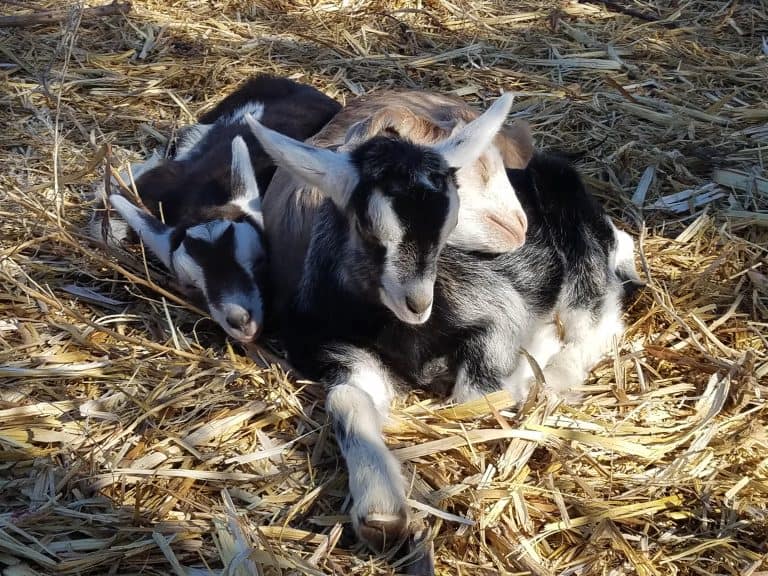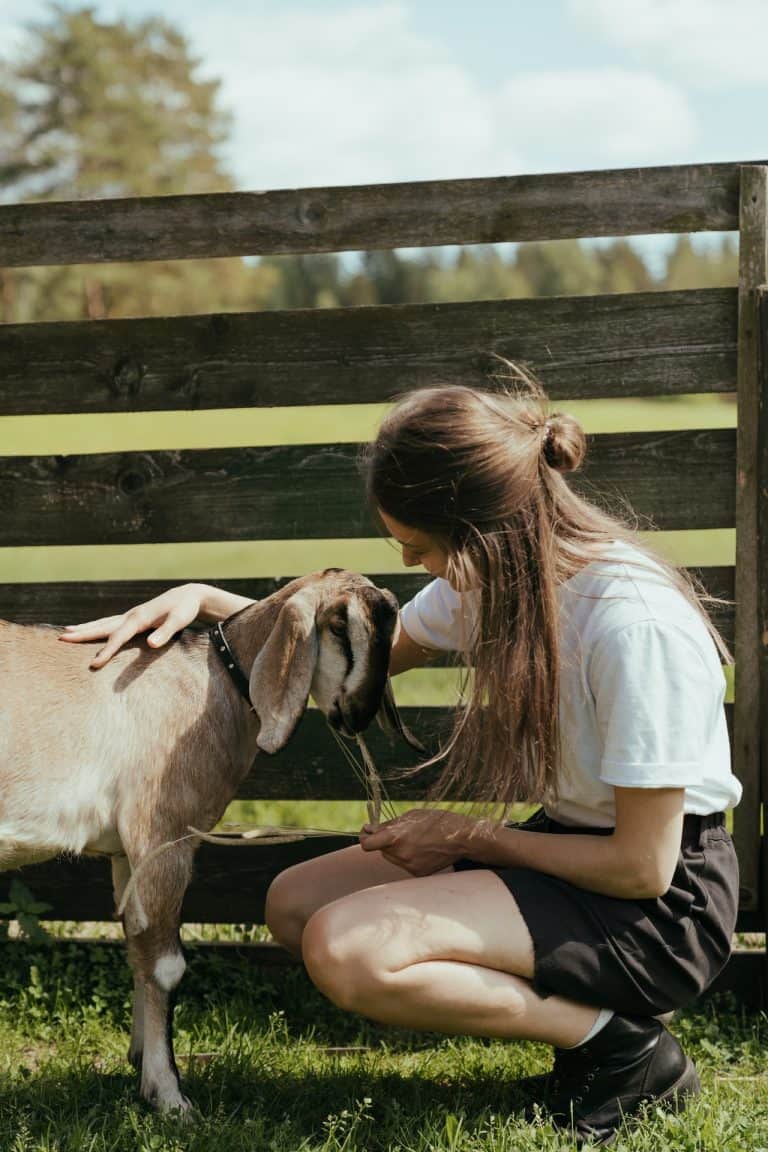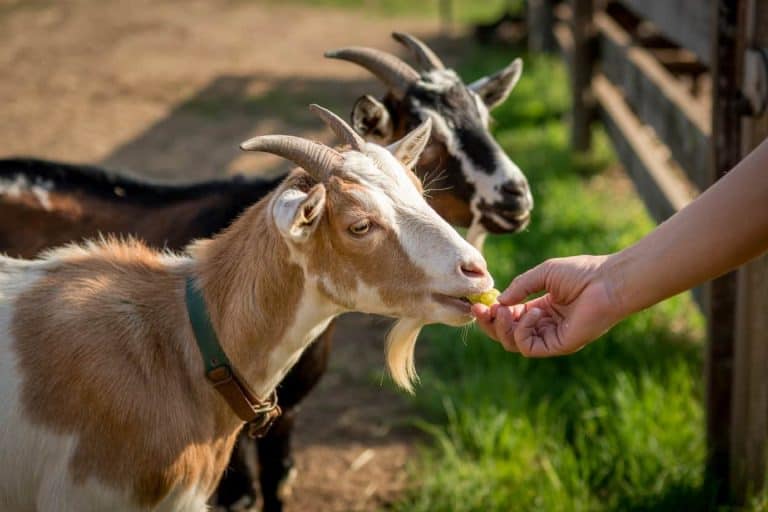Mastitis in goats can be really frustrating. It’s a painful inflammation of the udder, often caused by infection, and it’s a real headache for anyone caring for dairy goats. Left untreated, it can impact milk production and even harm your goat’s overall health.
The good news? With the right tools and some careful attention, you can manage it effectively while keeping your goats happy and healthy. Let me walk you through the steps that have worked for me.
(Quick disclaimer: I’m not a vet, just a fellow goat keeper sharing what’s helped on my homestead. Always consult a licensed veterinarian for medical advice.)
If you’re new to caring for goats, you may also find these tips for buying your first goat helpful as you navigate the joys and challenges of keeping a healthy herd.
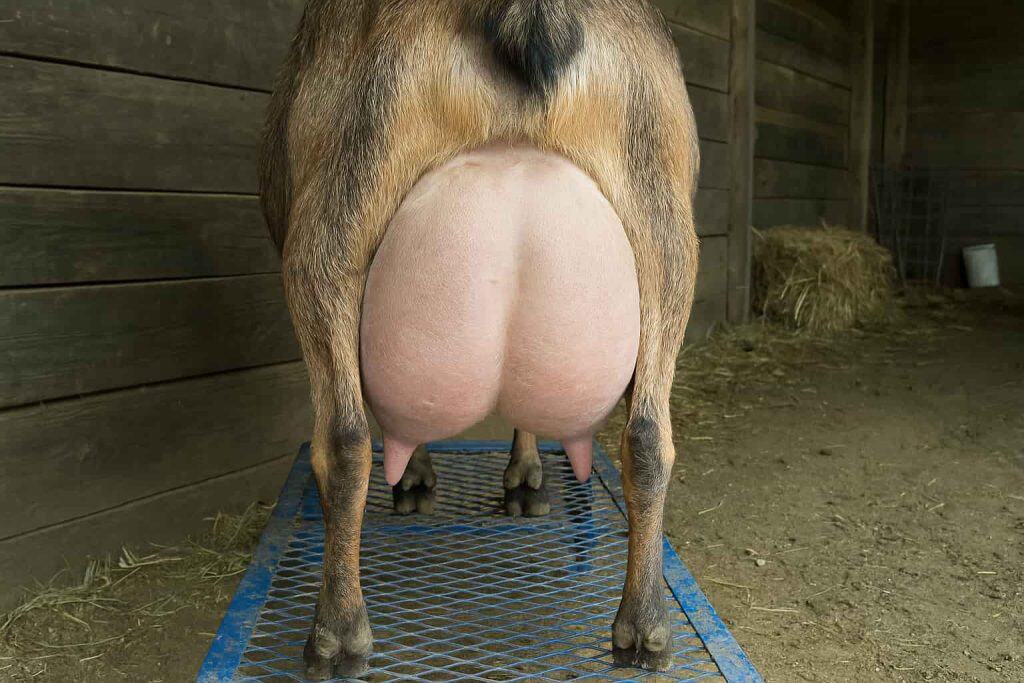
What is Mastitis in Goats?
If you’re raising goats, chances are you’ve heard the term “mastitis” tossed around. It sounds intimidating, but don’t worry—it’s something manageable. Mastitis refers to inflammation in a goat's udder that usually hits dairy goats the hardest.
What causes it? Well, we'll get to that, but first, let’s clear up what exactly this means.
Definition of Mastitis
Mastitis is a condition where a goat’s mammary gland becomes inflamed. It’s often caused by an infection, though injuries, other diseases, or stress to the udder can sometimes trigger it, too. This inflammation can lead to swelling, redness, and a decline in milk production. Think of it like an ” udder bug” that makes things uncomfortable for your goat and leaves you with less milk in the bucket.
For more in-depth details, checking out this resource on Mastitis in Goats – Merck Vet Manual is great to better understand the condition.
Causes of Mastitis
Now that you know what mastitis is, let’s look at why it happens. There are a few usual suspects:
- Bacterial Infections: This is the most common cause. Bacteria like Staphylococcus or Streptococcus get into the udder, usually through the teat.
- Unclean Conditions: Got dirty bedding in your goat barn? That’s an open invitation for bacteria to thrive. And yes, it’s something I’ve been guilty of slacking on from time to time (ok, like all the time)!
- Contaminated Milking Equipment: If your milking equipment isn’t washed correctly, bacteria can hitch a ride straight into the udder. It can also spread from one infected goat to another.
- Udder Injuries: Small cuts, bites from other goats, or trauma can damage the skin barrier and let bacteria in.
- Other Diseases: Some other goat diseases, like Caprine Arthritis and Encephalitis, can also cause mastitis to show up in goats.
Keeping milking areas clean, keeping goats healthy, and ensuring your goats have dry bedding can go a long way in preventing this pesky problem.
Types of Mastitis
Mastitis isn’t a one-size-fits-all condition. It can show up in different forms, each needing its own level of care. Here's a breakdown:
- Subclinical Mastitis
This one’s sneaky. There aren’t blatant symptoms like swelling or redness, but the milk might have subtle changes, and the goat’s overall health could dip slightly. You wouldn’t notice it in a casual glance—it usually requires lab testing to confirm. Your milk might taste “off” or go bad in a couple of days. You might notice some thick white or pink sediment in the bottom of the jar of milk. - Clinical Mastitis
This is the dramatic cousin of subclinical mastitis. Symptoms are more visible—an inflamed, hot, possibly hard/lumpy udder; clumpy, stringy, or discolored milk; and your doe might act like she’s in pain, lethargic, depressed, droppy, or be off feed. She may or may not have a fever. If you see these signs, it’s time to act quickly.
Each type has its challenges, but being aware of these differences helps you stay proactive. Even though subclinical mastitis doesn’t shout for attention like clinical mastitis does, it can signal potential trouble down the line.
For more on how mastitis can impact goats and practical management tips, you might find Mastitis in Ewes and Does helpful. This resource breaks down causes and treatments for inflammation in dairy animals.
Understanding the “what” and “why” behind mastitis is your first step toward treatment and prevention. Stick with me as we explore the nitty-gritty of managing this common issue in dairy goats.

Signs of Mastitis in Goats
Dealing with mastitis in goats is no small task. As a goat keeper, noticing subtle changes can be the best way to catch this condition early and protect both your goat’s health and your milk production.
Here’s what you should pay attention to if you’re worried about mastitis.
Physical Symptoms
The first signs of mastitis often show up in the goat's udder. Keep an eye out for these common physical changes:
- Redness, Swelling, or Heat: If the udder appears inflamed, feels warm to the touch compared to the other half, or looks unusually large, it might be a warning sign. You'll likely only see symptoms in one side of the udder and not both. The udder may also feel lumpy or hard when palpated.
- Changes in Milk: Milk with clots, a watery consistency, or strange coloration (like being pinkish or yellowish) can also point to mastitis. Some goat owners notice a sour or off smell in the milk as well. When you squeeze the teat like you normally would to milk, nothing or stringy thick clotted milk may come out. The milk may taste off as well, or it may go off in a day or two instead of staying fresh longer.
- Less Milk Production: If your goat that usually give a gallon at milking time now is only giving you half a gallon, it's a sign that something is up. Less milk doesn't always indicate mastitis, but it definitely warrants investigating further.
These physical symptoms are pretty obvious once you know what to look for, so make it a habit to check udders regularly during milking. It's also a great idea to keep an eye on the udders of does you aren't currently milking as well, since mastitis can show up in any doe.
I had a young doe last year with a precocious udder. She had never been bred, but does from really milky lines can get a precocious udder sometimes. I didn't worry about it as it was never overfilled and I didn't want to open her udder up to possible bacteria.
Long story short, she ended up getting mastitis, and had I checked her udder over more carefully, I would have found it and been able to treat it. Instead, I ended up having to cull what should have been a really nice milker.
Behavioral Changes
Your goat’s behavior can be just as telling as physical symptoms. They can’t tell you they’re in pain or don't feel well, but their actions might scream it:
- Lower Appetite: Mastitis can make your goat feel under the weather, causing them to eat less or go completely off feed. If your goats are anything like mine, when it's time for their nightly grain, nothing usually stands in their way of getting to it, lol. If your doe that usually runs to the grain pan doesn't or just nibbles, that's a sign that something is definitely wrong.
- General Restlessness: Does may seem reluctant to let you touch their udder or flinch during milking. They might act uncomfortable or distressed during normal activities.
- Lethargy or Depression: If your doe is usually friendly, happy, and active suddenly is droopy, quiet, not getting up, etc, then you know something is going on. Again, this doesn't always mean mastitis, but it always means that your goat is feeling yucky and needs your attention.
If your doe starts acting off or avoiding the milking process altogether, listen to her cues—she’s trying to tell you something.
Milk Testing for Mastitis
Sometimes, the signs aren’t clear-cut, especially with subclinical mastitis. That’s where simple tests come in handy:
- California Mastitis Test (CMT): This is a widely used and affordable way to detect abnormal somatic cell levels in milk. All you need is a test kit and a few minutes to screen for early issues. A small caveat here with the CMT test is that in goats, it can sometimes be inaccurate. Some goats naturally have a higher somatic cell count, and they will cause the test to gel even if they don't have mastitis. The CMT is best used monthly or every couple of weeks to establish a baseline for your doe, and then you can detect any changes that may appear.
- Vet and Lab Testing: If you suspect mastitis in your goat, you can have your vet send a milk sample off for testing, or you can do it yourself. Washington State University has a great testing lab, and they provide mastitis testing. Many other state universities across the United States have testing labs as well, so it may be a good idea to check with your local extension.
Testing might feel technical, but it doesn't need to be complicated. Using these tools can help you catch mastitis before it becomes a big problem. Testing also allows you to know what exactly is causing the mastitis, and that, in turn, allows you to treat it more effectively.
By paying close attention to your goat’s udder health and behavior, you’ll be ahead of the game when it comes to addressing mastitis. Because let’s face it—when your goats are happy, you’re happy too.
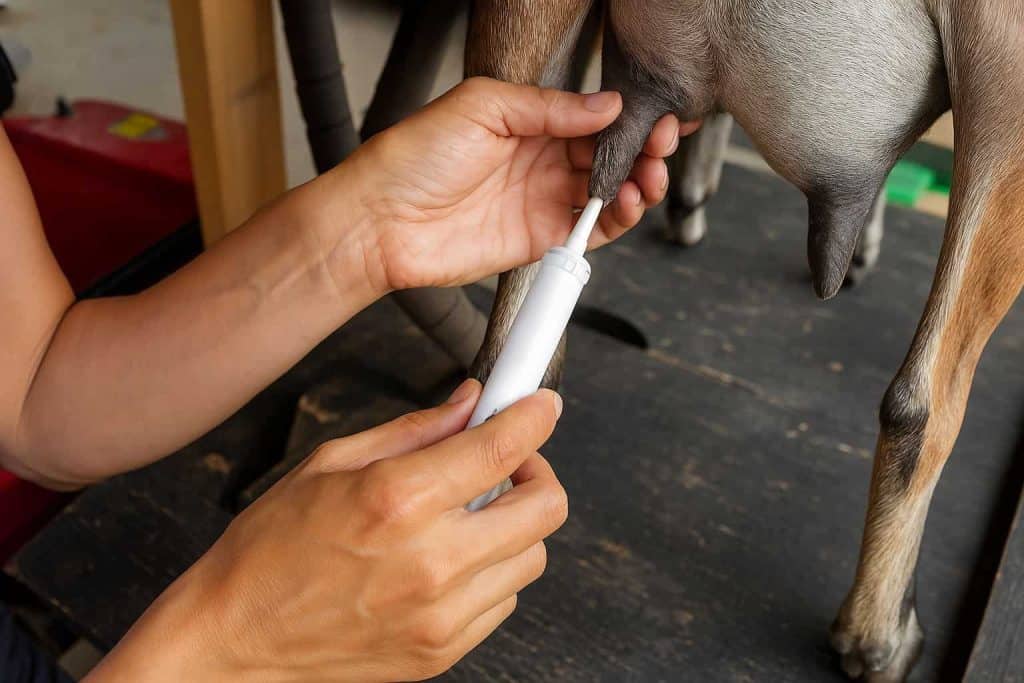
How to Treat Mastitis in Goats
If you're reading this, chances are you're worried about your goat and wondering what steps to take next. (Or maybe you're just studying up, which is great!) Mastitis can be overwhelming and seem a little scary, but the good news is that it's highly treatable with proper care.
A quick reminder again before we dive in—I’m not a veterinarian. I’m just sharing approaches that have worked for me and my goats on the homestead; always consult with a licensed vet to guide your treatment plan.
Immediate Steps After Diagnosis
It's always stressful when your goat is diagnosed with mastitis, but acting quickly can make a big difference. The first thing you want to do is isolate her from the rest of the herd if possible. This doesn’t just prevent the spread of bacteria—it also allows you to focus on her care without added distractions.
Side Note: If we're being honest, I'm really bad at this step, and generally don't separate a doe with mastitis.
When handling an infected udder, hygiene is non-negotiable! Wash your hands thoroughly, and keep the area around her udder clean and dry. Massaging the udder gently can help alleviate blockages and ease some of her discomfort.
Use warm compresses and an udder cream during the massage—it not only soothes her but may also help improve milk flow.
For a detailed breakdown of immediate care steps, check out How to Treat Mastitis in Goats.
Natural Remedies
If you're like me and prefer starting gently, natural remedies might be worth a try under certain circumstances. Garlic, known for its antibacterial properties, can be finely minced and mixed with molasses to encourage your goat to eat it. Some folks swear by adding a bit of echinacea to drinking water for immune support.
Essential oils like peppermint or tea tree, when diluted properly, can also play a role. You can gently massage a diluted mix onto the udder to help reduce inflammation and support healing. You can find udder creams with peppermint and other essential oils already in them at most farm supply stores.
Just be cautious—these remedies are complementary. They can't replace professional medical advice, especially for severe cases.
My favorite place to get natural mastitis remedies is Synergy Animal Products. That's not an affiliate link, I just really love their products, lol.
Medication Options
Sometimes, natural remedies alone aren't enough to handle mastitis, so we bring in the big guns. A vet will often recommend intramammary antibiotics or systemic treatments depending on the severity of the infection.
“Tomorrow” and “Today” are both common intramammary antibiotics (they come in a syringe with a teat cannula instead of a needle, and the medicine is injected directly into the teat) that are used to treat mastitis, but they are off-label for goats and require vet dosing.
The key to using antibiotics is to follow dosage instructions meticulously and adhere to “milk withdrawal times.” Milk from treated goats shouldn't be consumed until the medication has cleared their system—your vet will give you specifics. Each antibiotic has a different withdrawal time, so there is no “general time frame” for milk withdrawal.
Never play the guessing game with antibiotics. Improper use can lead to resistance, and that’s the last thing anyone wants in their barn. For insight into common treatments, check out the Mastitis in Goats – Merck Vet Manual.

Milking Techniques During Mastitis
Milking a goat with mastitis requires a little extra care to avoid causing her more pain or spreading the bacteria to other goats.
- Milk mastitis free does first – If you are milking more than one doe, then be sure to milk any that do not have mastitis before milking your doe that does have mastitis. This will help you prevent spreading mastitis to the rest of your herd through contaminated equipment or hands.
- Start clean – Always start with clean milking equipment and clean hands. This goes no matter if you have a goat with mastitis or not.
- Give your doe a massage – An udder massage that is. Starting your milking session with warm compresses on the infected udder and a nice firm but gentle massage will help loosen any junk hanging out inside. This will allow you to more effectively remove the milk and infection from the udder.
- Use a different bucket – Make sure to milk your mastitis doe into a different bucket or container. We don't want to mix the mastitis-infected milk with your good milk. If you're using a milk machine, I recommend just milking the sick doe by hand, but if you must use the machine, be sure to empty out the good milk first.
- Slow and steady – Go slow and steady milking your doe with mastitis. Milking will likely be at least somewhat painful for your doe. She may kick and dance around to prevent you from milking her. One of the best remedies for mastitis is to keep your doe milked out, so sometimes you have to show “tough love”. You have to get that milk and yucky stuff out. Just go slow and gently and take breaks if needed.
- Milk more often – If milking your goat with mastitis is not an easy task, then you may try milking 3-4 times a day instead of 1 or 2. More frequent milking will keep the total volume of milk in her udder lower, which means shorter milking sessions.
- Clean after – When you're done milking your goat with mastitis out, make sure you clean her teats and udder well. I like to use chlorhexadine wipes, but warm soapy water or other after-milking products work well also. Remember, we want to limit the spread of bacteria.
- Treat the doe – Always follow your vet's instructions for administering medications, but if you're using intramammary treatment, it is usually given after you milk out your doe.
- Clean your equipment well – Be sure to thoroughly clean and sanitize any equipment that came in contact with your mastitis doe. If you used a milk machine, be extra sure it is cleaned out well. Take it apart and scrub all the parts that contact the milk or your doe.
The milking process for a doe with mastitis is very similar to milking a healthy doe, but has a few different steps. Follow the above list and you'll get through it!
Supportive Care
Finally, general support is incredibly important for your doe. Think about it this way—mastitis (like any infection) puts a lot of strain on your goat’s body, so she’ll need every bit of energy and comfort she can get to recover.
Keep her hydrated with clean, fresh water, and provide a well-rounded diet to boost her immune system. Alfalfa hay, grain, or any supplements your vet may recommend can offer her that extra edge.
Let her rest in a quiet, dry, and comfortable space where she’s separate from the herd if possible, but still within sight to prevent loneliness (yes, goats are social creatures and get lonely too!). Be patient—healing takes time.
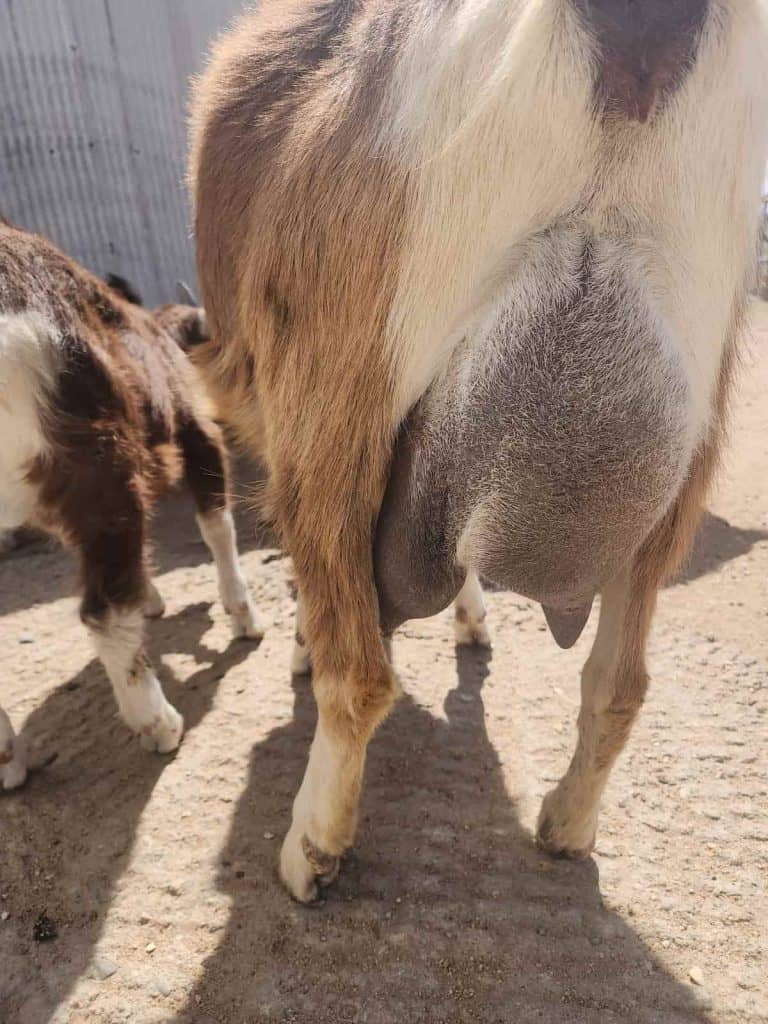
Common Mistakes to Avoid
When treating mastitis in goats, it's easy to make mistakes—often unintentionally—that can slow down the healing process or even make the situation worse. I’ve made a few of these myself, but the good news is they’re all preventable with a bit of know-how. Let's go over the most common pitfalls and how to sidestep them.
Skipping the Vet Visit
One of the biggest mistakes is trying to handle mastitis without consulting a veterinarian. I get it—vet visits can be expensive and sometimes inconvenient—but mastitis isn't something you want to guess at. Without professional advice, it’s easy to misdiagnose the issue or use the wrong treatment.
For instance, not all mastitis is caused by bacterial infections. Some cases might be due to injury or stress, and antibiotics won’t help there. Always consult a licensed vet to confirm the cause and determine the best treatment plan. Doing so could save you both time and resources in the long run.
Need a thorough guide? Here’s a helpful breakdown on How to Treat Mastitis in Goats.
Neglecting Milking Hygiene
Hygiene isn’t just a “nice-to-have” when treating mastitis—it’s super important. Dirty hands, unclean equipment, or a poorly sanitized udder can introduce more bacteria and worsen the infection. Neglecting this can make your goat’s recovery longer.
Here’s a quick checklist to avoid this mistake:
- Always wash your hands before and after milking.
- Sanitizing your equipment? Do it after every use, not just once in a while.
- Use pre- and post-milking teat dips; they help seal the teat openings and reduce contamination risks.
Improper Use of Antibiotics
Using antibiotics incorrectly is a common mishap that can lead to antibiotic resistance or even harm your goat. Maybe you're tempted to skip a dose, use leftover antibiotics from another case, or stop treatment early because your goat “seems fine.” I've been there, too, but trust me, it’s not worth the risk.
Here’s the deal: Always follow the vet’s instructions to the letter. Complete the full course of antibiotics, even if the symptoms start to improve. And never, ever self-prescribe medications—you need precise treatments tailored to your goat's specific infection.
Ignoring Isolation Protocols
Another common error is failing to isolate the infected goat. Mastitis can spread, particularly if it’s bacterial, and keeping the sick doe with the rest of the herd increases the risk. It’s like letting someone with the flu hang out in a room full of healthy people—it’s bound to end badly.
Set aside a clean, dry, and comfy spot for your goat to recover away from others. Keep her separated until she’s back to her healthy self. Yes, it’s a little extra work, but it helps protect the whole herd.
Over-Milking or Under-Milking
When treating mastitis, striking the right balance during milking can be tricky. Milking too aggressively can cause further damage to the udder, while under-milking leaves milk stagnating, which can foster bacterial growth.
My advice? Be gentle and consistent. Use a warm compress before milking to reduce discomfort, and focus on frequent, gentle sessions to ensure full drainage. If you’re unsure about milking techniques, here’s a helpful resource on Mastitis in Goats.
Forgetting Supportive Care
It’s tempting to focus solely on treating the udder and forget about everything else. But supportive care—like proper hydration, nutrition, and stress management—plays a big role in recovery. A weakened immune system makes it harder for your goat to heal, so don’t skimp on these essentials.
- Ensure access to clean, fresh water.
- Offer a nutrient-rich diet with immune-boosting supplements like zinc or selenium.
- Provide a low-stress environment to help her heal faster.
By steering clear of these common mistakes, you’ll give your goat the best chance at a quick recovery. It’s all about staying vigilant, organized, and proactive—you’ve got this!
FAQ's
Whew, that was a lot!
Mastitis in goats can feel overwhelming, especially when you're new to goat care, but it’s absolutely manageable. Acting early, maintaining a clean environment, and staying vigilant about your goat's udder health are your best tools in preventing and treating this condition effectively.
(And remember, I’m not a vet—always consult a licensed veterinarian for professional guidance.)
The key to success is building your confidence so you can spot potential issues and act swiftly. It’s all about practice and consistency. Over time, these skills will feel second nature, and you’ll be ready for any curveballs your herd throws your way.
If you're still learning the ropes of goat care, consider exploring essential tips like those found in Raising Dairy Goats for Beginners: Choosing Your Perfect Breed. They’ll set the foundation for confident, informed decisions as you navigate homesteading and goat care.
Your goats are lucky to have you in their corner—every step you take toward learning and preparation makes their lives safer and happier.


